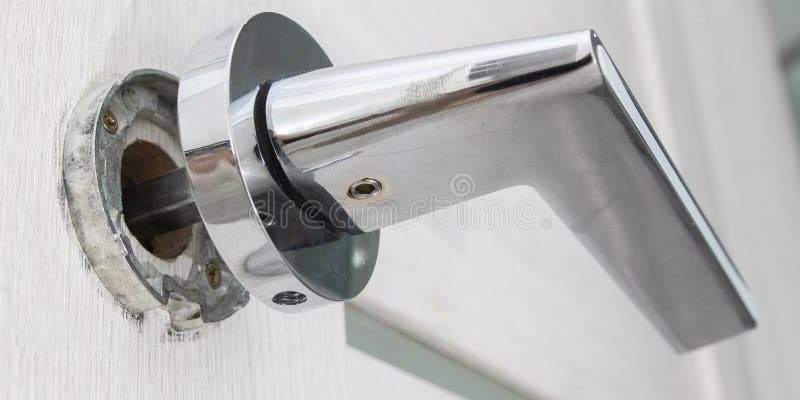
So, how do you deal with door hardware that suffers from the enthusiastic curiosity of children or the playful antics of pets? You could call a handyman, but why not try to fix it yourself? With a few simple troubleshooting steps, you can restore functionality to your doors and avoid costly repairs. Let’s break down the most common problems and solutions in a way that’s easy to follow.
Identifying the Problem
Before diving into repairs, the first step is figuring out what’s actually wrong. Look closely at the door hardware. Is the knob loose? Does the lock stick? Maybe there are chew marks, or the door won’t latch properly. Each of these issues has different causes and solutions.
For example, if your child has turned the doorknob into a makeshift toy, it might just need tightening. On the other hand, if a pet has found a way to scratch the door, you might be dealing with a deeper issue—like the wood swelling or the alignment shifting. Start by carefully examining the door’s mechanics and surrounding areas.
Common Signs of Damage
Here’s a quick guide to spotting damage:
- Loose Doorknob: Wobbles or spins instead of turning smoothly.
- Sticky Lock: Difficulty inserting or turning the key.
- Scratched Surface: Noticeable marks or gouges on the door or hardware.
- Poor Alignment: Door doesn’t latch properly, leading to gaps.
By identifying what you’re dealing with, you’ll save time and energy in the repair process.
Fixing a Loose Doorknob
A wobbly doorknob can feel annoying, but fixing it is often straightforward. Think of it like tightening a screw on a bicycle; once it’s secure, it works like new again.
First, check if there’s a visible screw on the doorknob. If you see one, grab a screwdriver and tighten it until it feels snug. If the screw isn’t accessible, you might need to remove the knob entirely. Usually, there’s a small set screw that holds it in place. Use the appropriate screwdriver to remove it, tighten any internal hardware, and reattach the knob.
If the knob is damaged beyond repair, consider replacing it. You can find various styles that match your decor while also being sturdy enough for the chaos of family life.
Resolving a Sticky Lock
Nothing is more frustrating than a lock that won’t cooperate, especially when you’re in a hurry. A sticky lock can be due to dirt or debris, or it might need lubrication.
To fix this, start by cleaning the lock. A can of compressed air can help blow out any dust or particles. Then, apply some graphite lubricant, which you can find at most hardware stores. Avoid oil-based lubricants, as they can attract dirt over time.
After you apply the lubricant, work the key in and out a few times to ensure it’s evenly distributed. This simple fix can save you from a lot of headaches.
Repairing Scratched Surfaces
Kids and pets can be rough on door surfaces. If your door has scratches or chew marks, don’t lose hope. There are ways to restore its appearance.
For minor scratches, a wood filler can work wonders. Clean the area first, then apply the filler with a putty knife. Once it dries, sand it down to make it smooth and even with the surrounding wood. Finally, you can stain or paint over it to match the rest of the door.
If the damage is extensive, consider re-staining the entire door. This can actually give it a fresh look and hide all those battle scars.
Dealing with Poor Door Alignment
Sometimes, doors get misaligned due to wear and tear or rough handling. A misaligned door can stick or not latch properly, which can be a nuisance.
Start by checking the hinges. Sometimes, you just need to tighten the screws on the hinges, which can pull the door back into alignment. If the door is still misaligned, you might need to adjust the hinges themselves.
To do this, simply unscrew them from the door frame and shift them slightly to align the door properly. Reattach and test the door—hopefully, it swings smoothly now!
Preventive Measures for the Future
After you’ve tackled the repairs, it’s a good idea to think about prevention. Teaching kids gentle behavior around doors can go a long way. You might set boundaries like “no slamming doors” or “gentle touch only.” For pets, consider installing door guards or using chew deterrents to protect the hardware.
Additionally, regular maintenance checks can help. Inspect doorknobs, locks, and hinges every few months. A little attention goes a long way in extending the life of your door hardware.
When to Call a Professional
While many of these issues can be fixed at home, some problems are best left to the pros. If you find that your efforts aren’t effective, or if the damage is extensive, don’t hesitate to contact a professional. They can provide a thorough assessment and ensure that everything is safe and functioning as it should.
Remember, it’s always better to ask for help than to risk further damage—your time and peace of mind are worth it.
In the end, door hardware doesn’t have to be a mystery. With a little know-how and a proactive attitude, you can troubleshoot and maintain the functionality of your doors. Whether facing the daily antics of kids or the playful energy of pets, you know now how to keep your home secure and welcoming. Happy fixing!
